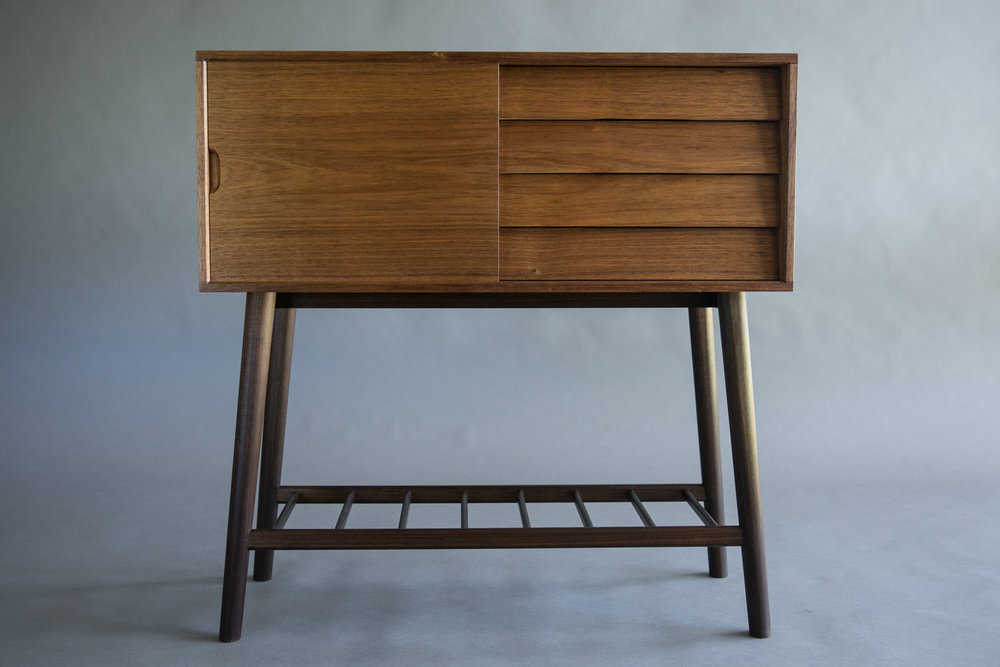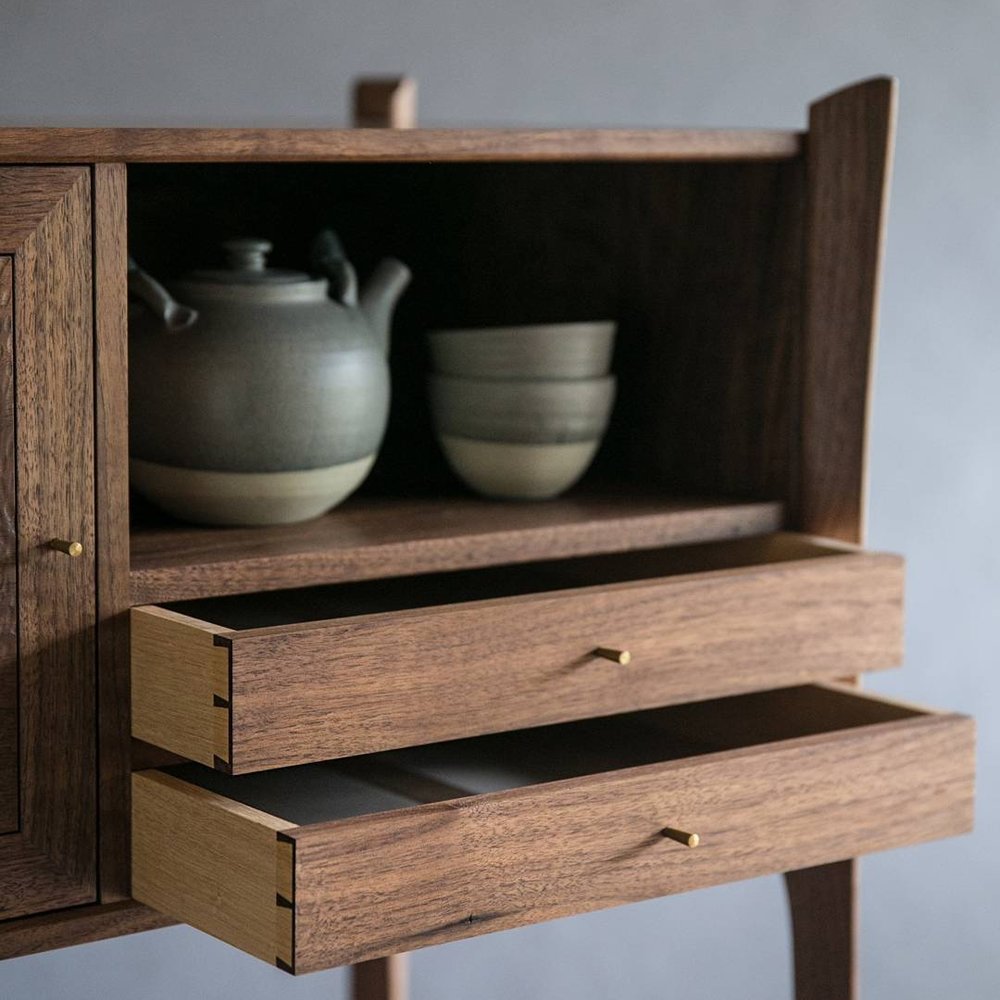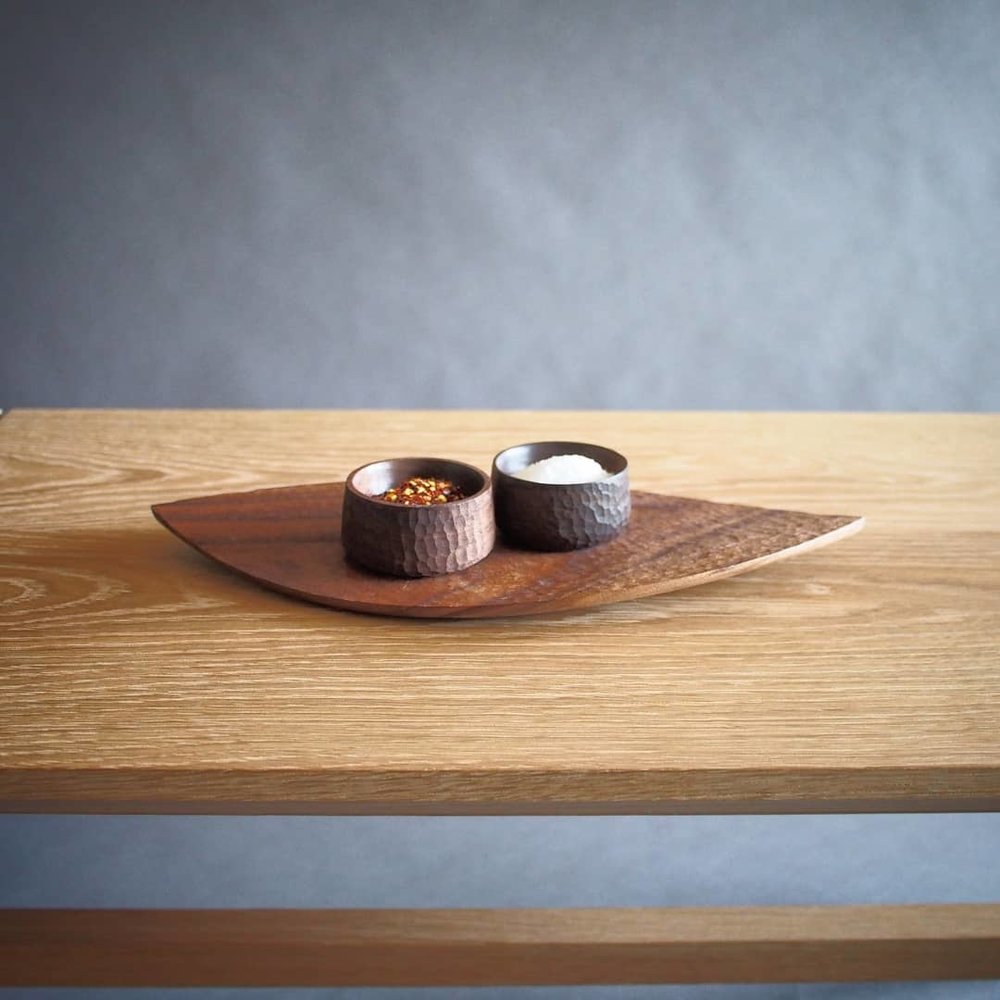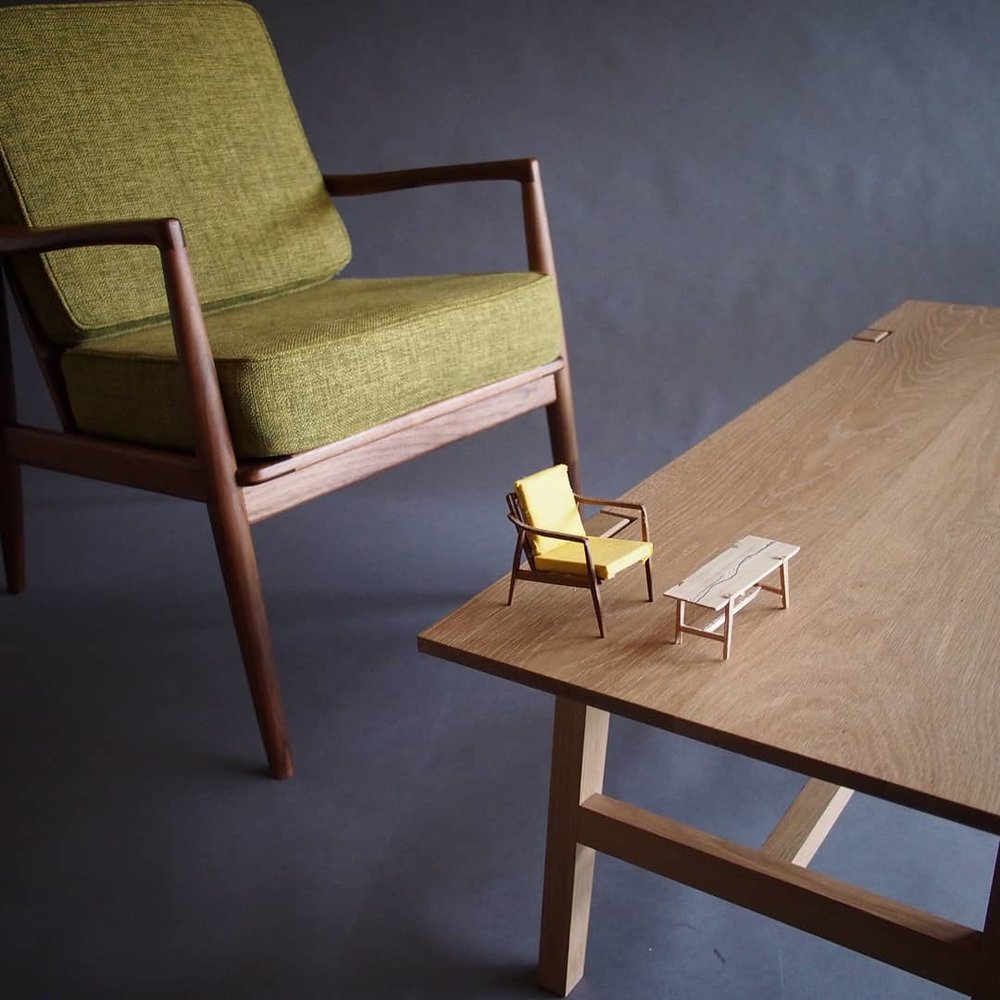
Credit: Reuben Daniel / Hannah Roche
Sometimes you come across the work of another woodworker and all you can do is; purse your lips together in that appreciative way; nod your head, and think to yourself— “Yess! Sweet work man. Respect.” This is pretty much what I did when I first saw Reuben Daniel’s work.
I didn’t realise it before I asked Reuben for the interview, but like myself, he comes from a carpentry background. Seeking to grow, Reuben set his sights on mastering his craft and furthering his understanding of design. He attended Sturt School For Wood where he competed his certificate IV in Furniture Design and Technology under the guidance of some of Australia’s finest designer makers.
Today Reuben turns out some top class work that is to be admired and learned from. I caught up with him recently to learn more about the man, and the work that fills his life.
Dónal Moloney: Reuben, thanks for taking the time to do this. I’m excited to talk to you, because I think your work is really outstanding. Maybe we can start at the beginning. How did you get into woodworking? Is it something you started straight out of school and had always wanted to do?
Reuben Daniel: After leaving school I had a few different jobs, I took pride in every job I had and prized myself on my work ethic, but it wasn’t until I started working with wood did I find my ‘thing’. I worked my way from builder’s labourer to carpenter’s hand to working as a carpenter… although I must state that I never had a formal apprenticeship. I was lucky enough to work for a man called Matt Fenn a master traditional timber framer who was the guy who taught me about wood, trees and traditional joinery. Matt gave me a copy of “The Village Carpenter” by Walter Rose, which started my fascination with craftsmanship and the people who were the master of their crafts. This fascination drove me to find ways to learn more about crafting out of wood which led to me enrolling at a furniture design and making school where I was taught by some of Australia’s finest furniture makers. I graduated realising that that was the beginning of a my path as a designer maker.

Credit: Reuben Daniel / Hannah Roche
DM: I’m intrigued by your business and how you market it. How does someone who has no website* (that I can find!) bring in work in this modern age!? You have a healthy Instagram following of nearly 5K, and your work speaks for itself when people see your stuff on your feed. But you rarely ever use hashtags! How do you put yourself out there so that people can find you?
RD: My business is young and I am in the process of getting a website* made and creating a client base. I recently completed a small business course and created a business plan which was a necessary eye opener to the realities of running a small business. Learning to market yourself to sell your work to bring in work is something I would prefer not to do but know I have to do it to keep the dream alive. Instagram is great for that, having good pictures is key… half of my photos were taken by a friend who is a photographer which has really helped my work get exposure on Instagram.
I have been lucky enough to have had a good run of commissions and I have struck up a good relationship with a local woodworks gallery/shop to sell some items through but I am realistic, I may have to pick up some construction work here and there to pay the bills which I am happy to do if it enables me to chase the dream of becoming a master craftsman designing and making beautiful things.
*Reuben’s new site is now live at; https://www.reubendaniel.work

Credit: Reuben Daniel / Hannah Roche
DM: I’d like to remind you of something you said recently; “Details. It’s easy to obsess over them… maybe no one else will ever notice them in the end, but I like to think the little details combined can really elevate a design. Perhaps it’s a sign that the designer/maker cares.” It’s easy to see that you care deeply about your work. Your Dansk Chair for example displays the qualities of someone who cares. Do you find it difficult to have patience for the small details while trying to balance the fact that you are a small business owner and your work needs to be made quickly and efficiently in order to make a living?
RD: I am not an inherently patient person but like most people when I care about something I make time for it and this is the approach I take towards my work because I find it fulfilling. Obviously there will always be limitations like money and time… but I don’t think there is a right or wrong way of doing things as long as you care.

Credit: Reuben Daniel / Hannah Roche
DM: Tell me a little about your model making exploits. It looks like great fun! How does this help you with your process of designing furniture? Is it something you have always had as part of your process?
RD: This is something I learnt in my formal training at Sturt School for Wood. The tutors there where fantastic and taught us model making as part of the design process, I guess it’s the old school version of CAD or SketchUp neither of which I know how to use.
I find it an important process and I often make a lot of changes to the design after I have made the model, it also lets you do a run through of the construction process and allows you to get a feeling about the visual balance and proportions of the piece. I don’t always make models though, sometimes a scale drawing is enough.
In essence it is a form of play and through play comes creative opportunities.

Credit: Reuben Daniel / Hannah Roche
DM: What does a typical day look like for you at the moment?
RD: I work out of a shared workshop which is a bit of a creative hub, the workshop is owned by sculptor and furniture maker Leon Sudubin who is a generous man and an inspiring mentor. Then there is captain Elise Cameron-Smith miniature boat builder, sculptor and furniture maker and Paul Chilton who is a designer maker of high-end fine furniture.
So it is a creative space where we all bounce ideas off each other. I generally work 8 or 9 hour days more or less if I have a deadline or the surf is good. I get excited during the making process and often get swept up the momentum, the days pass by quickly.. it’s quite the opposite during the design process though, I drive myself a bit mad until I get it, the design and my cutting list, and then I’m off making again!

Credit: Reuben Daniel / Hannah Roche
DM: How do you define success? And do you consider yourself successful?
RD: Doing something that you feel is meaningful and doing it as best you can. That’s success to me. Do I consider myself successful? At some things but most things are a work in progress and there are always things to improve!
DM: What advice would you give a young Reuben Daniel embarking on his woodworking career?
RD: Be authentic, don’t take yourself to seriously and be ready for opportunities!

Credit: Reuben Daniel / Hannah Roche
QUICKFIRE:
DM: Who is your favourite woodworker/designer/maker from past or present?
RD: I don’t have just one! Borge Mogensen, George Nakashima, Antoni Gaudi come to mind right now.
DM: What are you not very good at?
RD: Administration, it’s gross and we shouldn’t have to do it.
DM: What is the one part of your job that you enjoy most?
RD: Any time I get to work with my hand tools is enjoyable.
DM: What tool purchase turned out to be your best investment?
RD: Festool sander or my Lie Nielsen no.5
DM: What’s your favourite tune to blast out in the workshop?
RD: You’re Dead by Norma Tanega… I don’t know any of her other music but this song is on repeat at the moment!
THANKS
I’d like to thank Reuben for his thoughtful and insightful answers. Chasing his dream of becoming a master craftsman, while designing & building beautiful things for a living, is a noble and lofty goal. I love how he is focused on this goal but yet realistic enough to realise that there may be times when he needs to do some construction work “to pay the bills”.
There are lessons for all woodworkers here in the realities of running a small business, being authentic, and of course not taking yourself too seriously. I know I’ve taken a lot from hearing his thoughts.
To find out more;
https://www.reubendaniel.work
https://www.instagram.com/reuben__daniel/
P.S. If you liked this article, you may also like to get free and practical tips on woodworking techniques, business growth, productivity, and more in your inbox each week (you’ll also get the “How to Make a Living From Woodworking” PDF guide). Simply SIGN UP HERE to get exclusive access to a wealth of knowledge.
This post appeared first on https://www.sawdustetc.com